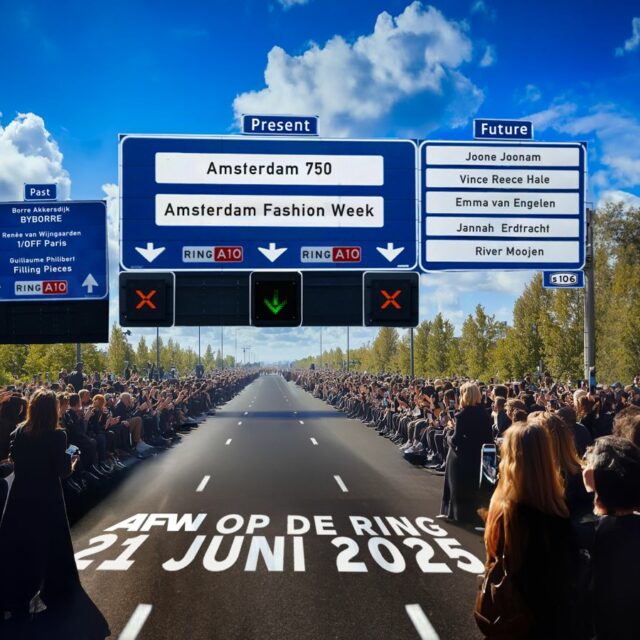After receiving an abundant amount of open call applications, the Lichting jury announced their selection of 10 final candidates that will be competing against each other for the Lichting 2023 title. Before their debut to the public during Amsterdam Fashion Week Edition 2023, AFW sat down with each participant to talk about their collection and their plans for the upcoming Lichting show. This week we would like to introduce you to Berke Taslidere.
Can you tell me something about yourself and your trajectory as a fashion student?
I was born to Turkish parents in Belgium and was always interested in dressing and clothing. I would catch myself analysing what people were wearing whilst walking to school, which later transformed into draping dresses with blankets on my younger siblings after they were born. Going to an art school was never considered as an option at home since “it wouldn’t pay the bills”, but I convinced my parents to study architecture at an art school as this sounded very sophisticated to them. I have to admit I hated studying architecture but loved being surrounded by creative people, so I continued my study and got my high school degree with an end project that related more to fashion than architecture. Moving to the Netherlands meant freedom to me. There was no one to hide from, no one to judge me, and no one stopping me to live how I want to live. Starting my fashion design education at Willem de Kooning Academy helped me fulfil this need to express myself through a medium I enjoy most, designing but also making garments.
How did the concept of your graduation collection come to being?
Moving to the Netherlands from Belgium was a process I still struggle with. Coming out to my parents forced me to leave all connections related to heritage, tradition, and family behind, as the future they had planned for me didn’t match my needs and goals. The idea of reconnecting to my past and heritage was already there. I just never felt ready to dig into these memories until reaching a mindset in which I still don’t agree with my parents but can understand them based on the place they were born in, the people they were raised by, and the environment in which they grew up. After five years of carrying this emotional burden, I finally had the courage to embrace that side of me through the only traditionally spent days at home: Turkish weddings.

What important themes do you address with your collection?
Through Turkish wedding traditions, I explore the main themes of gender and heritage within my collection. Based on my personal memories, experiences, and understanding, I question and blur the roles assigned to gender that are inherent in these traditions. Notably, the triple twist and tie gesture from the red ribbon tradition, which represents the bride’s virginity, became a functional closure and a tailoring element that replaces traditional zippers and buttons.
“ÜÇ” became an exploration of self-expression that pays homage to the cultural heritage that shapes me and an opportunity to foster inclusivity within a community I’m a part of, but not always accepted by.
How would you describe your signature as a designer? How does this reflect in your collection?
What I create is a perfect mixture between femininity and masculinity, this happens naturally as I feel too feminine to be masculine and vice versa. The clash I felt within my nationality and gender expression growing up became something I can embrace and use as a source of inspiration in all my garments. This is translated to my collection through my design process in which I draped existing garments on my body while embracing my fluidity, different from the traditional way of designing with a pencil and paper. This process also helps me focus on wearability due to my interest in clothing functioning in the everyday. My designs tell a story without yelling, screaming, or seeking validation from others.
Which piece from the collection are you most proud of? Why?
Look 8, which is a red satin dress named after my partner’s mom: Hanım. Inspired by the red ribbon tradition, this dress consists of two overlapping front panels with long ribbons attached to them, which you twist around the neck and tie at the back. This closure holds the dress in place whilst creating a suffocating feeling on the neck, representing one’s feelings about this tradition. Apart from the meaning it holds, it also pleases me visually, appearing feminine and romantic yet mysterious and masculine once analysing and going into detail.
![]()

What would be the ideal way to present your collection to the public in September? Can you already say something about what you currently have in mind?
This is still a work in progress, but I love the traditional way of showcasing my work through a runway show. A moment to witness my work brought to life by models and to appreciate the craftsmanship of the actual garments.





